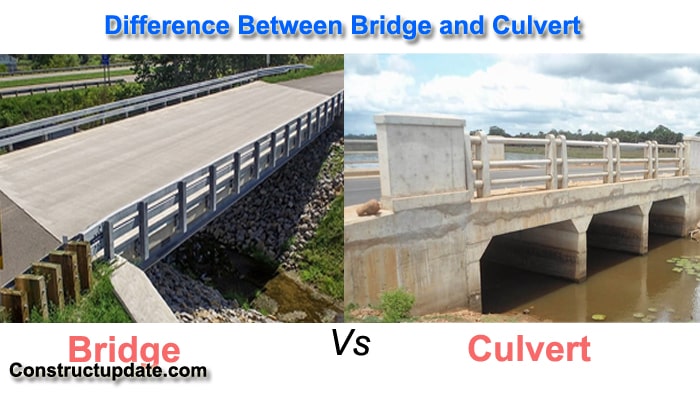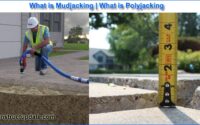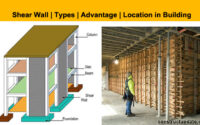What is Bridge | What is Culvert | Bridge Vs Culvert
Our civilization’s infrastructure relies heavily on bridges and culverts. Both provide a means of transportation, usually across moving water, and are frequently confused with one another. The length, purpose, design complexity, building components, and structure of bridges and culverts are all factors to consider.
What is Bridge?
A bridge is a drainage structure that allows for a communication path to transport highway or railway site visitors across a barrier or depression with or without water.
The communication route is usually a railway, roadway, cycle track, footpath, or a mix of these, with the obstacle being a river, stream, valley, channel, highway, railway track, or a combination of these.
Types of Bridges:
1. Minor Bridge:
The bridge has a total span of more than 6 metres but less than 60 metres.
2. Major Bridge:
The bridge’s total span exceeds 600 metres.
3. Long span bridge:
The big bridge’s main span is more than 120 metres long.
What is Culvert?
Culverts are tunnels that transport a watercourse beneath a road or railway. A culvert can be used as a bridge to allow vehicles to pass underneath it.
They’re usually situated near a natural water flow and function as a bridge or a current flow controller.
Because the road embankment cannot be allowed to block the water flow, a culvert is created beneath highways and roads for water crossing.
This culvert is good for a road because it allows water to flow in a controlled manner. Culverts come in a variety of shapes and sizes, including pipe, arch culvert, and box.
The type of culvert is determined by hydraulic, water surface elevation, roadway height, and other factors.

Type of Culvert
- Pipe Single or Multiple
- Pipe Arch Single or Multiple
- Box Culvert Single or Multiple
- Bridge Culvert
- Arch Culvert
Differences Between Bridge and a Culvert
| Culvert | Bridge |
| Concrete boxes or cells, pipes, a top deck or slab, and supporting sections are among the more basic components of a culvert. | The superstructure, substructure, and deck are the three basic components of a bridge (Parts of a bridge) (transfers surface load to other components). |
| A culvert is a tunnel-like structure that allows water to flow beneath a road or railway. | A bridge is a means of transportation that spans a big body of water or a physical barrier. |
| Culverts are frequently immersed in the ground, which takes the brunt of the culvert’s weight. | A bridge’s supporting structures are called abutments and piers. |
| Culverts are semi-circular, rectangular, elliptical, or pear-shaped structures that are completely enclosed. | A straight and linear assage is typical of a bridge. |
| The culvert is a two-sided construction with a roof and a floor that surrounds the water. | The bridge features no floor. |
| Culverts are usually no longer than 6 metres in length. | A bridge can span anything from 6 metres to over 120 metres. |
| A deep foundation is not required for the culvert. | When constructing a bridge, it is critical to lay a solid foundation. |
| These culverts are 20 feet high and span the blockage. | These bridges have been built to a height of more than 20 feet. |
| Culverts can be pre-fabricated or constructed on-site. | Culverts and bridges are typically built on-site or in tiny pieces. |
| Because culverts are simple in structure and design, they may be built quickly and with little effort. | Bridge construction normally takes a long period and a lot of personnel. |
| The culvert can be built on a shoestring budget. | A bridge’s structure and design are both attractive and complex, necessitating a large expense for its construction. |
| The culvert can be built to accommodate roadways both above and below the bridge deck. | The bridge deck is the only mode of transportation. |
| Sharp corners on some culverts, such as a box culvert, make them unsuitable for high-velocity vehicles. | Heavy and fast cars are not a problem for bridges. |
| When water must be conveyed down the road through tunnels or channels, a culvert is built. | A bridge is constructed over a huge body of water with varying flow. |
| Culverts avoid flooding, erosion, and waterlogging by allowing water to flow naturally beneath a roadway or railway. | The bridge provides a convenient transportation route that saves time and reduces distance. |





